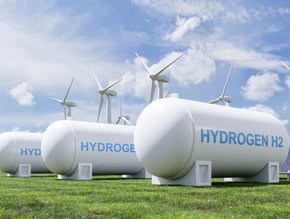
As we accelerate towards net zero in the energy transition, dependence on lithium-ion batteries grows extensively. In fact, the McKinsey Battery Insights team projects that the entire lithium-ion (Li-ion) battery chain, from mining through to recycling, could increase by over 30% annually from 2022 to 2030, when it would reach a value of more than $400bn and a market size of 4.7TWh.
Being a key component in EV batteries and within battery storage systems means that global supplies of Li-ion batteries are under strain. The world could face lithium shortages by 2025, the International Energy Agency (IEA) says, meaning that research and investment into alternative solutions are pertinent if we are to slow down reliance on fossil fuels.
A circular vision
Mitigating shortages and easing the immense strain on supply chains could be alleviated by implementing a circular strategy: reusing and recycling lithium-ion batteries. By establishing a circular economy for lithium-ion batteries, businesses could enjoy lower manufacturing expenses, generate supplementary income sources, and receive tax advantages. This could additionally create employment opportunities through the emergence of new and expanded markets.
Implementing circular economy practices could also enhance market competitiveness by showcasing a business's dedication to eco-friendly initiatives, which could in turn build consumer trust and bolster its reputation. This approach could yield various environmental benefits, such as a reduction in waste, energy consumption, and greenhouse gas emissions, while also preserving raw materials.
As a result of these advantages, there may be increased federal, state, and local investment in circular economy initiatives in the United States, along with private investment in innovative products, services, and processes aimed at recovering and reusing materials.
An advocate for the circular economy is Clarion’s Chief Sustainability Officer, Adam Muellerweiss, who emphasises that the industry must utilise recycling to get the maximum life out of every energy storage device.
“There's only so many metals and materials on the periodic table that can be used for energy storage. We need them all and must be able to do them in a circular way. We need to be able to collect, manage, and reuse those resources.
“This is why we work with the Global Battery Alliance, formed with the World Economic Forum, to help foster this conversation globally, to really identify opportunities to use information, data, resources, and capabilities that we all have today in understanding the providence of materials, where they're going into what vehicle, ensuring chain of custody is managed, and to understand that, as that vehicle or that battery or that pack changes hands, second-life opportunities may be explored,” Muellerweiss states.
Considering alternatives
Sodium shares many chemical similarities with lithium. And, as it doesn’t have the same environmental impact as lithium, it’s a potential alternative.
As such, sodium-ion batteries could provide a viable solution. It doesn’t rely on scarce resources, and its production doesn’t necessitate rare lithium salts, either. Instead, it can be produced using common table salt.
EnerVenue – a company dedicated to developing nickel-hydrogen batteries – has revealed plans to construct a $1bn gigafactory, spanning 1mn/sqft, on a 73-acre property located in Shelby County, Kentucky. This facility will serve as a hub for the design, production, and testing of the company's Energy Storage Vessels, which utilise nickel-hydrogen technology.
EnerVenue’s CRO, Randall Selesky, believes alternative technologies have emerged that are expected to perform better across stationary storage use-cases and, critically, also take the load off of lithium-ion.
“Sodium-ion battery technology offers a glide path for power providers seeking to upgrade existing lithium-ion-based solutions directly. Sodium-ion batteries contrast with li-ion chemistries by leveraging more sustainable and available materials with far fewer environmental concerns. At the same time, improving sodium-ion batteries are on target to possibly surpass lithium-ion batteries in energy density, while already coming in at a low cost,” Selesky states.
“Sodium-ion battery production is such that existing lithium-ion manufacturing facilities can easily convert to producing sodium-ion batteries, enabling a frictionless shift as demand for this technology matures. For stationary energy storage use-cases, sodium-ion batteries should offer a compelling substitute for lithium-ion in the near future.”
Supply chain resilience
Better supply chain management such as localisation, vertical supply chains, and strategic partnerships are integral in ensuring supply chain resilience. Due to the limited availability of regional raw materials, effective management of the upstream supply chain will continue to be crucial.
To enhance the security of supply and cost-reduction, a more integrated approach between metallurgy and chemistry at the production level could well be key. A positive by-product of such an approach would be the incidental sustainability improvements, geopolitical and ESG risk-reduction, and lower costs achieved by regionalising and colocating multiple steps in battery manufacturing.
An integrated approach and vertical supply chains are important to Clarios, with Muellerweiss stating: “When we try to sell a battery, we want to recover a battery and get that back. It doesn't matter if we made the battery, it doesn't matter if it's exactly the same size that we're selling. It doesn't matter if there are multiple batteries that somebody wants to return back. We want it because that is the start of our supply chain.
“For us, our raw materials come from around the corner, not around the world. They come from an auto parts store, an auto dealer, or a repair shop where people are replacing batteries throughout their lifespan. By doing this, it provides us with a resilient, local, low-carbon, low-energy footprint source of raw materials that allows us to turn those right back into new batteries – new batteries that are now specifically designed for the EV revolution that we're supporting.”






